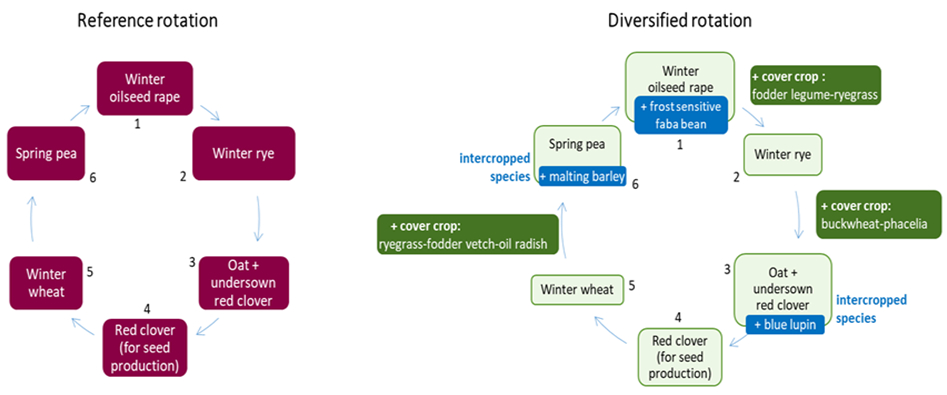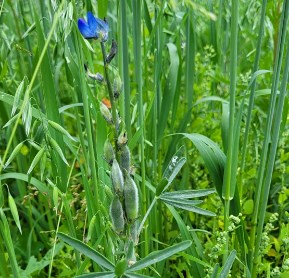The multi-dimensional benefits and interdependencies of various performance criteria of diversified organic cropping system will be evaluated by determining crop performances, above and below ground diversity and its social and economic sustainability.
Specialisation of cropping systems (mono or sole crops) relying on external inputs, specially agrochemicals, post World War II have increased food production but also pollution and decline in beneficial organisms e.g. soil mycorrhiza, pollinators, natural enemies. Crop diversification (CD) practices such as intercropping with legumes and cover crops can reduce anthropogenic inputs e.g. fertilisers, pesticides etc. by increasing reliance on ecosystem services. However, the lack of knowledge of CD on key agronomic, environmental, social and economic indicators hinders its wide adoption. The findings of this project will increase the understanding of the complex mechanisms associated with CD, and help farmers and advisors to find support and guidance for transition towards more sustainable cropping systems in Sweden.
The specific objectives are to:
- Evaluate the effects of CD on crop health and quality by assessing above-ground biodiversity, insect damages and utilisation of biological nitrogen fixation.
- Determine how CD influences soil health in terms of soil biodiversity and soil N availability for crop uptake, increased soil fertility (C and N content), and
- Assess the social-well-being and economic resilience of CD
We will use a long-term organic crop rotation in Alnarp, Sweden to study the differences in performances between a reference crop rotation with a diversified crop rotation (see figure below).


